Exhibitions
2016-2 MOMAT Collection
Date
-Location
Collection Gallery, from the fourth to second floors
The collection exhibition from August 16 – November 13, 2016

Welcome to the MOMAT Collection! Here are a few things to keep an eye out for in this edition of the exhibit. First, along with several Nihon-ga (Japanese-style paintings), which convey the seasonal transition from summer to fall, in the “Highlights” section (Room 1, 4th floor), please enjoy a selection of modern Western works by artists such as Cézanne and Braque, and masterpieces of Japanese oil painting. In Room 4, we present a special display on Azechi Umetaro, a print artist who loved mountains, and in contrast, in Room 5, a group of distinctive works dealing with cities and crowds. In Room 7 (3rd floor), we focus on the depiction of light in postwar art. And in the special display on the theme of “Night and the Moon” in Nihon-ga, in Room 10, please examine the way in which light is expressed.
In conjunction with the Thomas Ruff exhibition on the first floor, we present modern German photography from the period between World War I and II in Room 9 (3rd floor), and contemporary German photography in Room 11, 12 (2nd floor). By comparing these pictures to Ruff’s photographs, you are sure to arrive at a deeper understanding of the works.
Finally, in Gallery 4 (2nd floor), please enjoy a small exhibit titled “Modern Landscape: For the Pleasure of People and Scenery – Nara Yoshitomo Curates the MOMAT Collection.” By viewing these works through the eyes of the artist, you are certain to discover new charms. Please enjoy treating yourself to the many and unique pleasures of the MOMAT Collection.
Works in the exhibition are subject to change.
* The first: August 16 – October 2
* The second: October 4 – November 13
Important Cultural Properties on display
The National Museum of Modern Art, Tokyo Collection (main building) contains 14 items that have been designated by the Japanese government as Important Cultural Properties. These include nine Nihon-ga (Japanese-style) paintings, four oil paintings, and one sculpture. (One of the Nihon-ga paintings and one of the oil paintings are on long-term loan to the museum.)
The following Important Cultural Properties are shown in this period:
- Yorozu Tetsugoro, Nude Beauty, 1912
- Nakamura Tsune, Portrait of Vasilii Yaroshenko , 1920
- Murakami Kagaku, Kiyohime at the Hidaka River, 1919 (Exhibit Date: August 16 – October 2)
- Please visit the Important Cultural Property section Masterpieces for more information about the pieces.
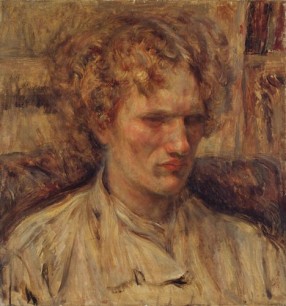
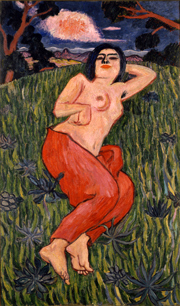
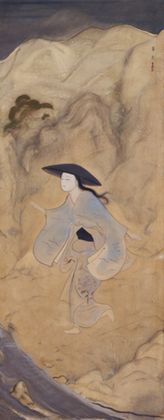
About the Sections
MOMAT Collection comprises twelve(or thirteen)rooms and two spaces for relaxation on three floors. In addition, sculptures are shown near the terrace on the second floor and in the front yard. The light blue areas in the cross section above make up MOMAT Collection. The space for relaxation A Room With a View is on the fourth floor.
The entrance of the collection exhibition MOMAT Collection is on the fourth floor. Please take the elevator or walk up stairs to the fourth floor from the entrance hall on the first floor.
4F (Fourth floor)
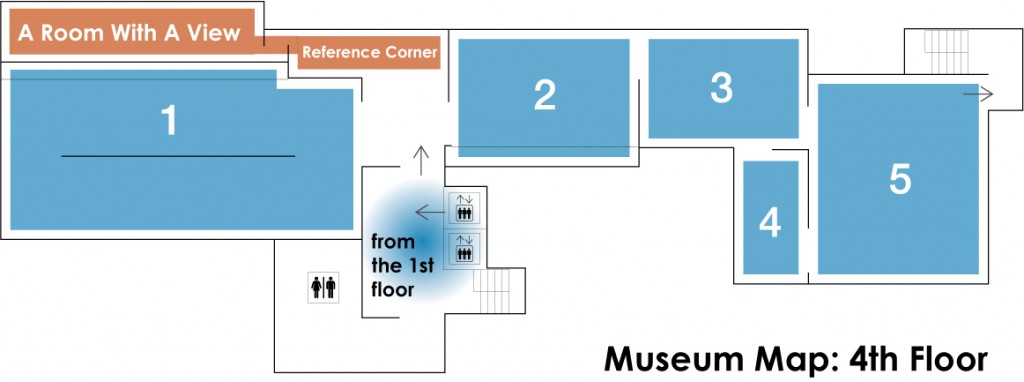
Room 1 Highlights * This section presents a consolidation of splendid works from the collection, with a focus on Master Pieces.
Room 2– 5 1900s-1940s
From the End of the Meiji Period to the Beginning of the Showa Period
A Room With A View
Reference Corner
Room 1 Highlights
Over 200 works are lined up in this 3,000-square-meter space – these extravagant conditions are the selling point of the MOMAT Collection. But in recent years, we have received an increasing number of comments like, “They’re so many things here, I’m not sure what to see!” and “All I want to do is have a quick look at the famous works in a short period of time!” Thus, in conjunction with the gallery renovation in 2012, we have created this “Highlights” corner to allow visitors to enjoy a consolidation of splendid works from the collection, with a focus on Important Cultural Properties. For the walls, we have selected navy blue to make the works stand out more beautifully. And to eliminate the glare of glass cases, we have opted for a mat black for the floor to help viewers concentrate on the displays.
In this edition of the exhibit, we present Nihon-ga (Japanese-style paintings), which deftly capture the seasonal transition that occurs as summer changes into fall, in two periods – the first ending on Oct. 2 and the second starting on Oct. 4. Throughout both periods, you can also enjoy works by Cézanne, Braque, Klee, and Picasso, who exerted a tremendous influence on 20th century art, and some of the most important works by the Japanese painters Yorozu Tetsugoro, Kishida Ryusei, and Saeki Yuzo. In Room 1, you will also find Nara Yoshitomo’s Harmless Kitty, which is related to the small exhibit in Gallery 4 (2nd floor).

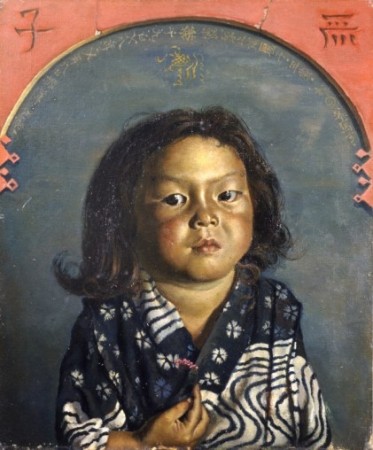
Room 2 Passionate Vision
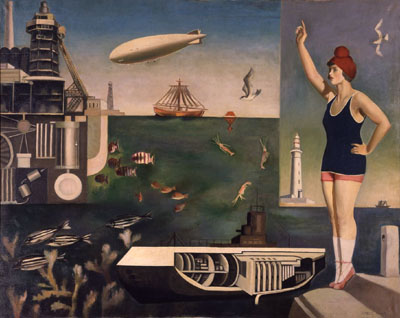
If Meiji-era art is notable for its close links to the creation of a new cultural identity as Japan emerged as a modern nation-state, Taisho-era art is distinguished by its emphasis on individual artistic vision. In seeming opposition to the moderate realism advocated by the Ministry of Education Fine Arts Exhibition (or Bunten), the young, ambitious artists who appeared in the Taisho Period developed a series of trends that were informed by Western movements like Fauvism, Cubism, and Futurism. The Futurist Art Association was established in 1920 in response to a call from Fumon Gyo. In the same year, the 1st Hakka-sha Exhibition, overseen by the Nihon-ga (Japanese-style) painter Otake Chikuha, presented a group of some 50 works with a clear connection to Futurism. In 1922, Kambara Tai and Koga Harue began a group called Action, and Murayama Tomoyoshi launched a radical avant-garde art group called Mavo. These diverse activities are striking for their use of machines and cities as subject matter, and their expression of movement through brushstrokes and color.
Room 3 Love and Cream Buns
Established in 1901, the bakery Shinjuku Nakamuraya is still headquartered in the Shinjuku district of Tokyo. Its founders, Soma Aizo and his wife Kokko, loved the arts and many young artists gathered at the bakery. These included sculptors such as Ogiwara Morie, Nakahara Teijiro, and Tobari Kogan, and painters such as Nakamura Tsune and Yanagi Keisuke. Perfectly conveying the freedom of the period, associated with so-called “Taisho democracy,” Nakamuraya was one of the era’s most important art salons.
The art salon concept originated in Europe, and its most significant feature was an attractive proprietress who discovered talented people. At Nakamuraya, Soma Kokko fulfilled this role. Ogiwara Morie was in love with Kokko and his work Woman is said to be based on her appearance. For his part, Nakamura Tsune fell first for Kokko and then later for the Somas’ oldest daughter, Toshiko. In both cases, however, his love went unrequited. As these examples suggest, in art salons during the Taisho democracy era, love was an important source of nourishment for art. So what about cream buns? In 1904, Nakamuraya became the first shop in Japan to make the baked delicacy.
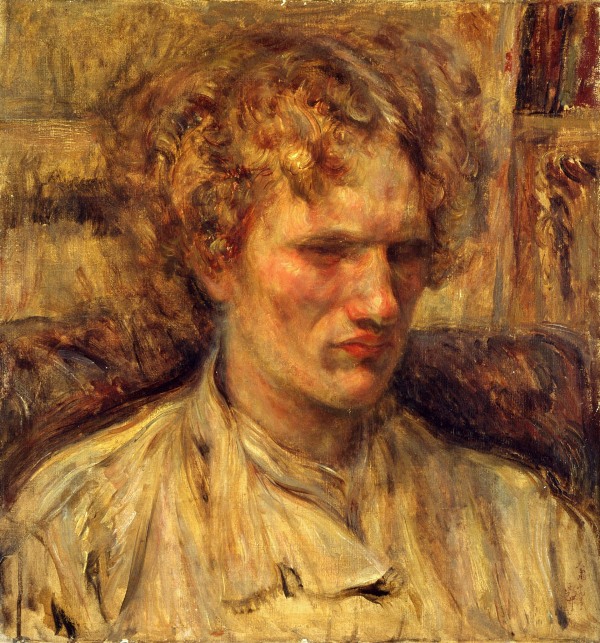
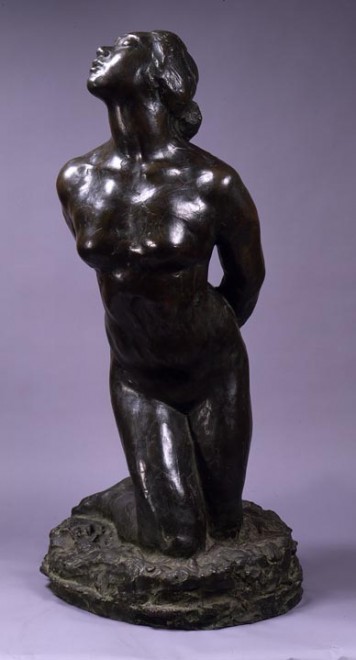
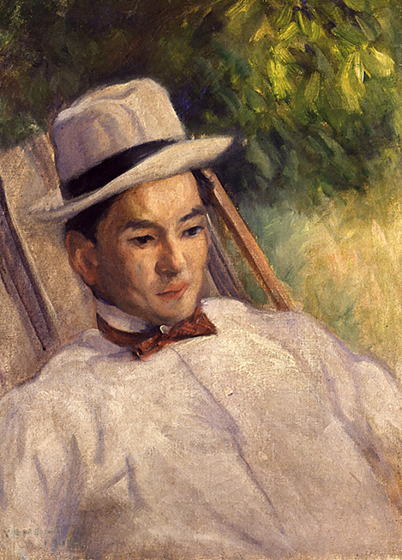
Room 4 Feeling the Mountains: The World of Azechi Umetaro
This year August 11 was designated as Mountain Day, a new national holiday designed to give people an opportunity to become more familiar with and show their appreciation for the many blessings of mountains. With this in mind, in this section, we focus on Azechi Umetaro, best known for his Mountaineer series and images that have appeared on T-shirts.
Born in Ehime Prefecture, Azechi moved to Tokyo to become an oil painter. While employed in the typesetting division of the Government Printing Bureau, Azechi’s lead plate prints were recognized by Hiratsuka Unichi, setting him on the road to a career as a printmaker. In time, Azechi began to deal with rugged mountain scenery, earning a reputation as a “mountain printmaker.” This epithet came into widespread use along the emergence of the bearded mountaineer in Azechi’s work in 1953.
Azechi once said, “I don’t go to the mountains to paint pictures. I love mountains, so I climb them.” As this suggests, it was unusual for him to make sketches. Azechi’s woodblock prints, reconstructions of the sensations he had in the mountains, are made with simple shapes, lines and contrasting colors. They contain both a heart-warming quality and profound depth.
Room 5 Cities and Crowds
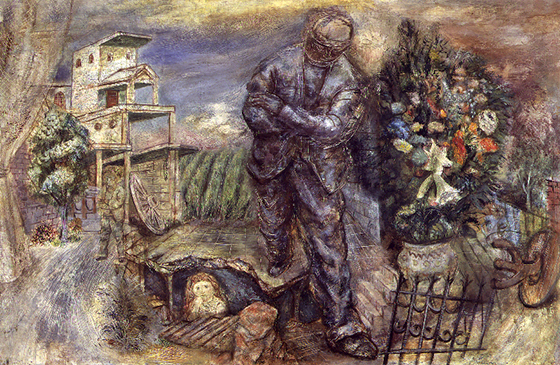
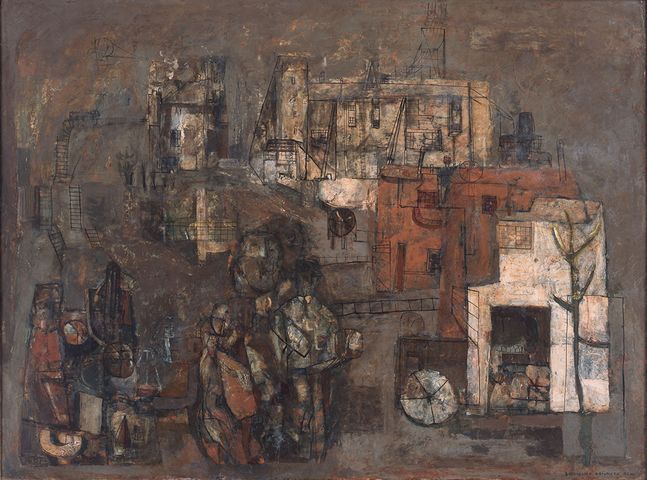
Scene near N Station ,1940
In fiscal 2015, the museum acquired a group of eleven works by Matsumoto Shunsuke. Here, we introduce two, Scene near N Station and Black Flowers, which are structured like montages made out of cities and people. Please compare these works to other artists’ depictions of crowds.
In George Grosz’s print collection In the Shadows, a satirical depiction of capitalists exploiting weary laborers, the forms of people coming and going through the streets are sometimes fragmented and juxtaposed with each other (see no. 6). In Noda Hideo’s Way Home, and the aforementioned works by Matsumoto, we can detect Grosz’s influence. In their work, however, the kind of repulsive image found in Grosz’s pictures is concealed in the shadows, and instead there is a stronger emphasis on the loneliness of people living in the city. This might in part be related to the fact that the montage technique hinges on cutting out images and combining them in a different context. This also conveys the mood of the times.
3F (Third floor)
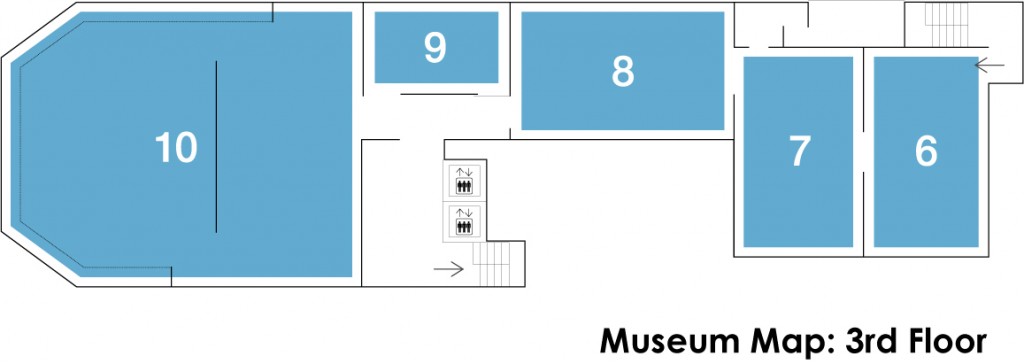
Room 6-8 1940s-1960s
From the End of the Meiji Period to the Beginning of the Showa Period
Room 9 Photography and Video
Room 10 Nihon-ga (Japanese-style Painting)
Room to Consider the Building
Room 6 Human Images in Wartime
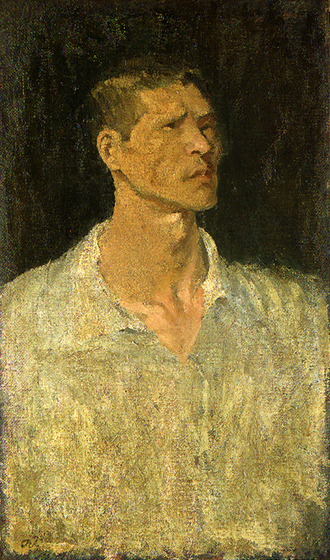
Self-Portrait,1944
During the period between the Sino-Japanese War and the Pacific War, many Japanese artists struggled to find a connection between the war as a major social event and their work. Some of the Western-style painters who had studied in Europe took the opportunity to venture into historical painting, an important genre in the West. The biggest challenge they faced was how to depict groups of people in a monumental way.
At the same time, many Japanese-style painters used traditional images such as Mt. Fuji and cherry blossoms to symbolically inspire the nation. By dealing with samurai and other historical figures, some painters also attempted to indirectly express the war. In addition, a younger generation of artists tried to prove that they could realistically depict modern war as well as any Japanese- or Western-style painter.
Under the circumstances, the avant-garde painter Ai-Mitsu’s Self-Portrait seems to be filled with his complex mental state. Leaving this picture behind when he departed for the front, Ai-Mitsu never returned.
Room 7 The Whereabouts of Light
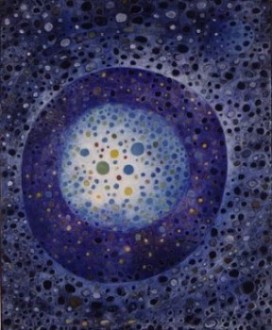
There are a considerable number of works made immediately after Japan’s defeat in World War II that deal with the theme of auspicious light and consciously contrast light and darkness. These include Kitawaki Noboru’s Parabola, depicting the opening to a brightly-lit cave next to a man on crutches, and Okamoto Taro’s Dawn, depicting red light radiating out of the darkness, which is filled with a jumble of eerie human figures and a beast baring its fangs. Recalling the light trail of a celestial body, Nambata Tatsuoki’s Generation plunges us into the chaotic origins of the universe. Following a long exploratory period, Lucio Fontana arrived at the technique of slashing the canvas, but the fact that his knife exposes a pitch-black space is also highly significant. The moon in Max Ernst’s picture rises over an earth filled with bizarre wriggling forms, and a soft light burns in Hoshino Shingo’s Title Lost, Cogwheels, a kind of pantomime of mechanical parts. In Kusama Yayoi’s No. H. Red, a series of minute, red brushstrokes covers a black ground, and in Ei-Kyu’s pointillistic Dawn, light flickers and a throbbing world opens.
Room 8 Swinging and Swaying
Along with a design movement that attempted to revolutionize daily life, abstract painting, which emerged in Western Europe in the 1920s and ’30s between World War I and II, set out to renew the 20th century’s aesthetic sensibility. Established in Weimar, Germany in 1919, the Bauhaus, a comprehensive educational facility that strove to unify art and technology, counted artists like Wassily Kandinsky and Paul Klee among its teachers.
While referencing music and plant growth, the artists’ abstract paintings are distinguished by a consistently dynamic structure made up of colors and forms. In light of the fact that Alexander Calder’s kinetic sculptures, which he called “mobiles,” emerged during the same period, it is clear that movement in art was believed to contain new potential to create dialogue with the viewer and an interactive relationship with the surrounding environment.
Though this trend was interrupted by World War II, similar work began to flourish all over the world in the 1950s. While absorbing the ideas of the Bauhaus and the art of Klee and Calder, Yamaguchi Katsuhiro and Kitadai Shozo, members of the Japanese art group Jikken Kobo (lit., “experimental workshop”), which was formed in 1951, crafted unique and dynamic images through their use of new materials like glass and aluminum.
Room 9 Modern German Photography: New Vision and New Objectivity
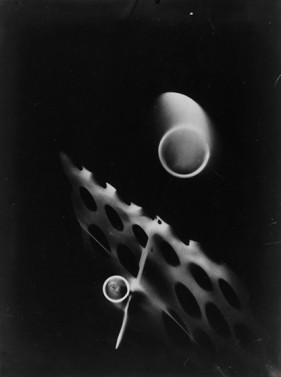
In conjunction with the Thomas Ruff exhibition (Aug. 30 to Nov. 13), we examine trends in modern German photography that emerged between World War I and II. The so-called New Photography movement in German consisted of two major currents: Neues Sehen (New Vision) and Neue Sachlichkeit (New Objectivity).
The leader of the former, László Moholy-Nagy, was a teacher at the Bauhaus where a new artistic curriculum centering on architecture was developed. Seeing photography as a medium for expanding human perception, his colleagues and students made a variety of experimental works.
On the other hand, Neue Sachlichkeit (New Objectivity) first emerged as a trend in socially critical, realistic painting in Germany after World War I. It was subsequently developed in photography as a method of apprehending the world based on naturalistic depiction. One of the main proponents of the approach, the photographer Albert Renger-Patzsch, declared that the “key to excellent photography lies in realism” and set out to express new beauty in the world via the kino-glaz (“cine-eye”).
Some of the other photographs in this exhibit suggest links with other currents of the era such as Constructivism and Surrealism.
Room 10 Night and the Moon
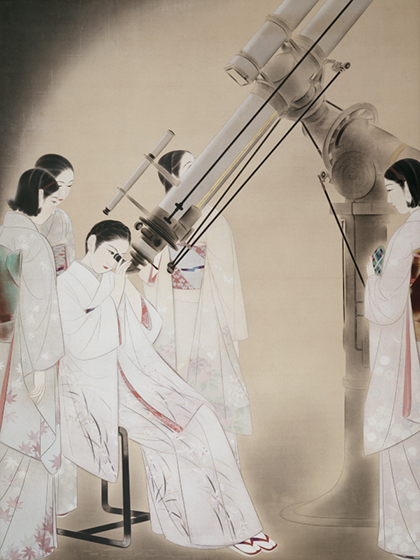
A woman’s white face, a white kimono, ears of pampas grass, bush clover, cherry trees, and plum blossoms… the moment we see these things depicted against a dark background, we are reminded of moonlight. These thoughts are not only triggered by visual information, they are clearly related to the traditional lyricism of waka and haiku poetry that is part of our cultural background.
In ancient times, the moon was also a symbol of wandering. No sooner does the moon become full than it begins to wane. There are innumerable works of literature in which the waning moon is connected to a woman and a moon hidden behind clouds signals a deep feeling of love. The emotions that dwelled in the hearts of the ancients are probably no different than those of modern and contemporary artists. For example, the moons in Takayama Tatsuo’s Heaven and Kayama Matazo’s Moon and Rhinoceros seem to convey the loneliness and minuscule scale of life.
Darkness also complements pictures of the moon. The artistic sensibility extracts various things from the dark night. In this room, we present a selection of Nihon-ga (Japanese-style paintings) dealing with night and the moon.
2F (Second floor)
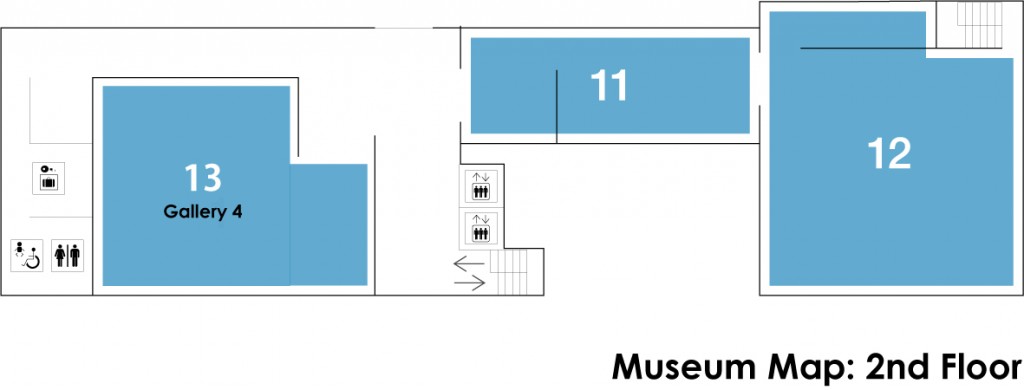
Room 11-12 1970s-2010s
From the End of the Showa Period to the Present
Gallery 4
* A space of about 250 square meters. This gallery offers cutting-edge thematic exhibitions from the Museum Collection, and special exhibitions featuring photographs or design.
May 24-November 13, 2016 (except August 8-August 15, 2016)
Room 11 Photography
In conjunction with the Thomas Ruff exhibition (Aug. 30–Nov. 13) on the first floor, here in Room 11 and 12, we present German photography from the museum collection.
In Room 11, the first thing we would like to call your attention is Bernd and Hilla Becher’s works, which place a strong emphasis on objectivity and documentation. The Bechers, a married couple who were also artistic collaborators, taught at the Kunstakademie Düsseldorf. A succession of influential photographers emerged from their classroom, including not only Thomas Ruff but also Andreas Gursky and Thomas Struth. Gradually, these artists have come to be referred to as the “Becher school.” You will find their work in Room 12.
Also, please take a minute to look at the work by Francis Bacon. This is a painting, but in lieu of drawings, the artist used photographs as part of his production process.
Room 12 Photography Continues: Reusing Things
Continuing on from Room 11, we focus on German photography, particularly the Becher school (please refer to the explanation in Room 11 for details). Incidentally, Suzuki Takashi studied with Thomas Ruff at the Kunstakademie Düsseldorf and later worked as an assistant to Thomas Struth. Is there something about his photographs that carries on the work of the Bechers?
In one corner of the room, there is a group of works that reuse things such as wood scraps, fish bones, and magazines clippings in their original state (instead of taking pictures of them). What sort of “operation” is needed for something that would not normally be seen as an object of art appreciation to assume that quality? Collecting, connecting, altering forms, and adding color… come to think of it, operations like these are essential to understanding the origins of art.
About the Exhibition
- Location
-
Collection Gallery, from the fourth to second floors
- Date
-
August 16, 2016 – November 13, 2016
- Time
-
10:00-17:00 (10:00 – 20:00 on Fridays and Saturdays)
*Last admission is 30 minutes before closing. - Closed
-
※Closed on Mondays (except September 19, October 10) and September 20, October 11
- Admission
-
Adults ¥430 (220)
College and university students ¥130 (70)*Including the admission fee for MOMAT Collection and Modern Landscapes – For the Pleasure of People and Scenery: Nara Yoshimoto Curates the MOMAT Collection.
*The price in brackets is for the group of 20 persons or more.
*All prices include tax.*Free for high school students, under 18, seniors(65 and over), Campus Members, MOMAT passport holder.
* Show your Membership Card of the MOMAT Supporters or the MOMAT Members to get free admission (a MOMAT Members Card admits two persons free).
*Persons with disability and one person accompanying them are admitted free of charge. *Members of the MOMAT Corporate Partners are admitted free with their staff ID. - Free Admission Days
-
Collection Gallery and Gallery 4
Free on September 4, October 2, November 3 and 6, 2016 - Organized by
-
The National Museum of Modern Art, Tokyo


